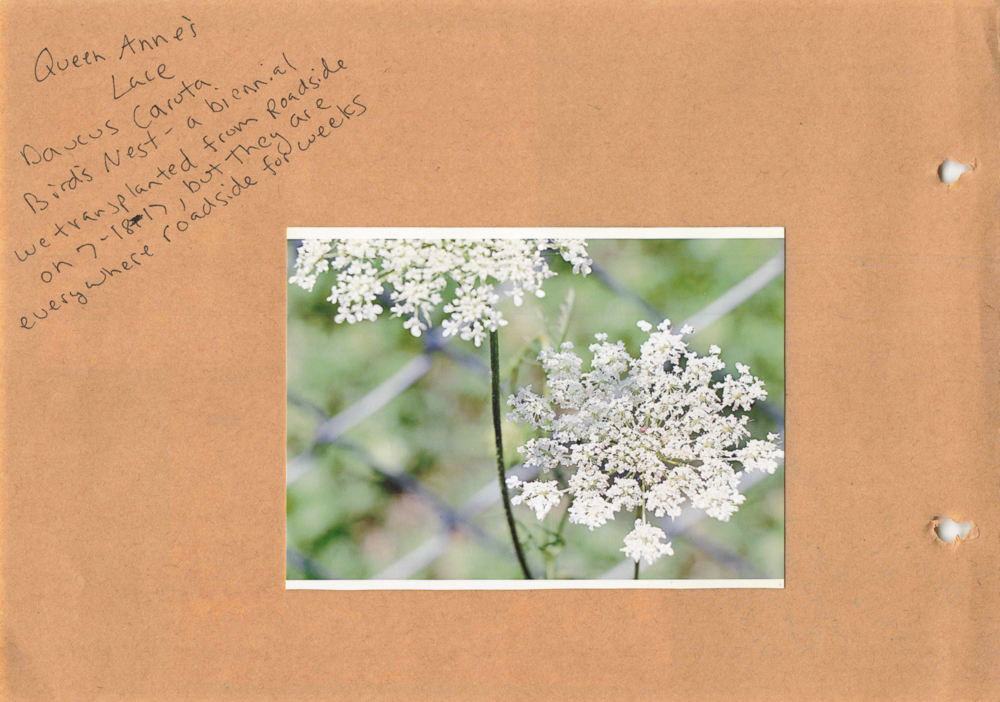My Corner Online
Daucus Caruta | Queen Anne's Lace | Bird's Nest

Daucus carota | Queen Anne's Lace, Wild Carrot, Bee's Nest-plant, Devil's Plague, Bird's-Nest
Apiaceae (Carrot Family) (Umbellifers) Pronounced Ah-pee-aye-see-eye
The common name of "Queen Anne's Lace" some attribute to Queen Ann of Britain and Ireland (1665-1714) who liked to wear lacy patterns in her fine clothing which were similar to the flower disk, and others attribute it to Saint Anne, the mother of the Virgin Mary and grandmother of Jesus, the patron saint of lacemakers (etc.). There is a red dot in the center of the Queen Anne's Lace flower which is said to resemble a drop of blood when Queen Anne pricked herself with a sewing needle while making lace.
I love these flowers because of the masses that I see along the roadsides and on hiking trails. They are so lovely! I want to grow them in my yard, and I did try one year, but it disappeared and then I rethought my efforts as it would probably be too much work to maintain them from spreading.
The lower bracts which face downward are three-forked which distinguishes it from similar plants.
The leaves are feather-like. The stem, however, is naked.
For farmers, this is a good companion plant, especially for tomatoes, because it attracts wasps which pollinate, but some states still consider it a noxious weed.
As the flower ends, the seeds begin to develop and the umbel curls up at the edges creating a concave surface like a nest. I have seen this and it is quiet peculiar! Then the dried umbels of seeds detach from the stem and become like tumbleweeds in the wind spreading the seeds.
Queen Anne's Lace is a wild edible root, hence the name "wild carrot," but it's look-alike, Hemlock (Conium maculatum) is poison and deadly, so I would think to just stay away from eating anything.
Here are the differences between:
Queen Anne's Lace
A. Hairy stem
B. No purple markings on stem
C. Less than 3 ½ feet high
D. No clustered flowers; flowers are close to look like one flower on a flat surface
Hemlock
A. Smooth textured stem/no hair
B. Vivid green stems with purple markings
C. 5 foot high
D. Flower clusters; separate, but close together, small clusters coming off short stems from the main stem